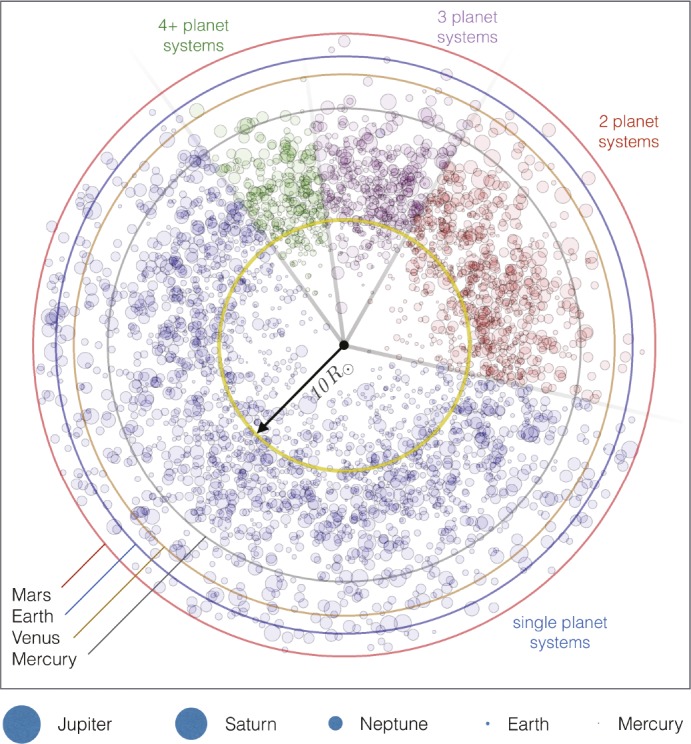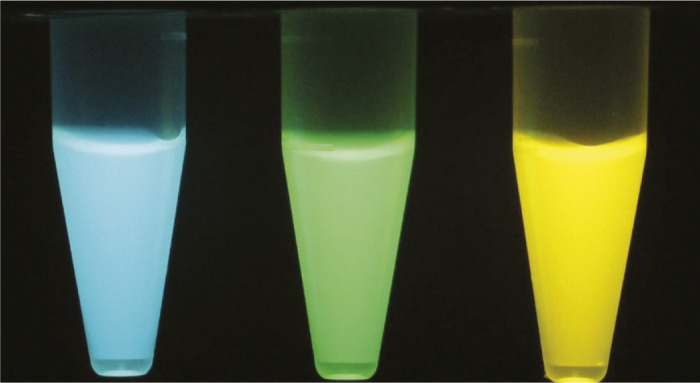Banded vegetation patterns

Satellite imagery from 1965 showing bands of vegetation (dark) alternating with bare ground (light) in Niger. Image courtesy of the US Geological Survey.
Vegetation in semiarid climates often self-organizes into banded patterns with shorter wavelengths on steep hillslopes than on gentle slopes, seemingly contrary to mathematical models of banded pattern formation. Jonathan Sherratt (pp. 4202–4207) examined models of vegetation pattern formation, finding that banded patterns can occur when uniform vegetation degrades with decreasing rainfall or when vegetation initially colonizes bare ground with increasing rainfall. Rainfall runs off more quickly on steep slopes than on gentle slopes, potentially lengthening the wavelength of patterns generated by degradation of uniform vegetation. However, rainfall-dependent plant colonization patterns on bare ground may generate short wavelength bands on steep slopes, suggesting that the history of vegetation on a hillslope may be inferred from vegetation banding patterns. The author reports that vegetation band patterns in the Sahel region of Africa exhibit decreased wavelength with increased slope, suggesting that vegetation arose through colonization of bare ground. Historical climate records for the region indicate periods of severe drought that may have cleared hillslopes of vegetation, followed by humid periods in which vegetation may have become reestablished. Recolonization by vegetation may have occurred between 1760 and 1790 or since approximately 1850, according to the author. — P.G.
Jupiter migration in the early Solar System

Orbital distribution of known sub-Jovian extrasolar planets around their parent star, with orbits of inner planets for comparison. Radial distance is shown on a logarithmic scale.
The Solar System, in which low-mass inner planets are relatively far from the Sun, may be an anomaly compared with most known extrasolar planetary systems, which feature large planets that orbit close to their parent stars. Konstantin Batygin and Greg Laughlin (pp. 4214–4217) modeled planetary formation in the early Solar System and found that inward migration of Jupiter from an orbit of more than 5.0 AU to around 1.5 AU, followed by outward orbital migration, may explain the low mass of inner rocky planets. Inward migration of Jupiter may have entrained and shepherded small planetary precursors, initiating a collisional cascade in the inner Solar System. The authors suggest that the aerodynamic evolution of the generated planetesimal swarm likely facilitated orbital decay of preexisting planets and planetesimals close to the Sun, potentially explaining the lack of large planets close to the star. The remaining volatile-poor, mass-depleted debris would then have formed into the inner planets. The findings suggest that stars that harbor giant planets with orbital periods longer than 100 days may be unlikely to also host multiple close-in planets, and that Earth-sized close-in planets may be enriched in volatiles and uninhabitable, according to the authors. — P.G.
Indigenous fixed nitrogen in martian deposits

Curiosity rover at the John Klein drill site, where samples were taken. Image courtesy of NASA/JPL-Caltech/MSSS.
Nitrogen gas comprises about 2% of the martian atmosphere, but little is known about other possible nitrogen reservoirs on Mars. Jennifer Stern et al. (pp. 4245–4250) report that the Mars Science Laboratory Curiosity rover has detected the presence of oxidized nitrogen-bearing compounds in deposits within Mars’s Gale crater. The authors report that nitrogen species were detected in samples from three sites, with total nitrogen concentrations ranging from 20 to 250 nmol per sample. The samples contained more nitrogen than could be attributed to known terrestrial instrument sources, and the bulk of the nitrogen detected across the samples was in the form of nitric oxide (NO). The authors suggest that the NO may have been released from decomposition of nitrates as the sample heated during analysis. The presence of nitrates in different types of deposits, representing both the martian dust and soil reservoir, and a potential ancient lakebed, suggests that the nitrates may have resulted from nitrogen fixation through thermal shock from lightning or impact on ancient Mars. Terrestrial life requires a fixed form of nitrogen for synthesis of crucial biomolecules, and the discovery of indigenous fixed nitrogen in martian rocks and sediments has important implications for the past habitability potential of Mars, according to the authors. — S.R.
Luminescent proteins for real-time cellular imaging

Purified Nano-lantern proteins with cyan, yellow, and orange emission.
The use of fluorescent proteins for live imaging of cells and organelles is a key tool for modern cell biologists, but light sources used to excite fluorescent molecules can cause photobleaching, photodamage, and the unintended activation of other light-responsive proteins. Though proteins from bioluminescent organisms, such as the sea pansy Renilla reniformis, can provide an alternative to fluorescence without excitation, luminescence imaging has been limited by the low brightness and lack of color variation of existing luminescent proteins. Akira Takai et al. (pp. 4352–4356) developed bright cyan and orange luminescent proteins, termed Nano-lanterns, based on the proteins’ previous yellowish-green version. The authors report that the cyan and orange Nano-lanterns are approximately 20 times brighter than wild-type Renilla luciferase, by virtue of efficient bioluminescence resonance energy transfer from the Renilla luciferase to a fluorescent protein. The authors demonstrate that the Nano-lanterns can be used for live imaging of intracellular structures for several hours without photobleaching or photodamage. Although luminescence may be a practical alternative in imaging situations where fluorescence is problematic, the signal intensity of the Nano-lanterns is around 100 times weaker than that of fluorescent proteins, according to the authors. — L.G.
Carbon monoxide as potential energy source on Mars
The search for past or current life on Mars has focused primarily on the existence and distribution of liquid water. However, even with sufficient water to support microbial life, researchers have not yet identified an energy source that could fuel metabolism by surface or near-surface microbiota. Gary King (pp. 4465–4470) examined whether relatively high carbon monoxide (CO) concentrations in the martian atmosphere represent a plausible substrate for bacterial metabolism under relevant ambient conditions on Mars both during the planet’s past and present. Drawing parallels with CO oxidation in saline terrestrial environments, the author demonstrates that CO uptake could be active at local scales in putative martian brines, features that would form seasonally and explain the narrow, dark-toned streaks known as recurrent slope lineae. Furthermore, the author suggests that halophilic CO-oxidizing Proteobacteria and a recently identified extremely halophilic CO-oxidizing Euryarchaeota represent suitable models for how the martian atmosphere might support microbial communities. The findings establish a framework whereby microbial CO oxidation can potentially occur at local scales on contemporary Mars and at large scales earlier in the planet’s history, according to the author. — T.J.
Evolution and origin of leprosy bacteria
The bacterium Mycobacterium leprae has long been considered the single causative agent of leprosy, but a previous study suggests that a related species, Mycobacterium lepromatosis, may underlie a rare but severe form of the disease known as diffuse lepromatous leprosy. Using a comparative genetics approach, Pushpendra Singh et al. (pp. 4459–4464) describe how the two species evolved from genome downsizing and genetic decay of a common ancestor. The authors pieced together a nearly complete M. lepromatosis genome from the skin biopsy sample of a patient in Mexico and compared it with the known genome of M. leprae. A Bayesian dating analysis suggests that the species likely diverged 13.9 million years ago and continued to lose genes, albeit from different genomic regions, after separation. The authors suggest that M. lepromatosis has retained the capacity to infect Schwann cells of the peripheral nervous system, suggesting that the species may cause nerve damage. A phylogeographic survey of 227 biopsies from patients in Asia, Europe, and the Americas suggests that M. leprae is widespread, whereas M. lepromatosis may be restricted to patients from Mexico. According to the authors, the genome-wide comparison provides insight into the biology of M. lepromatosis and uncovers the evolutionary history of two closely related but distinct species. — A.G.


